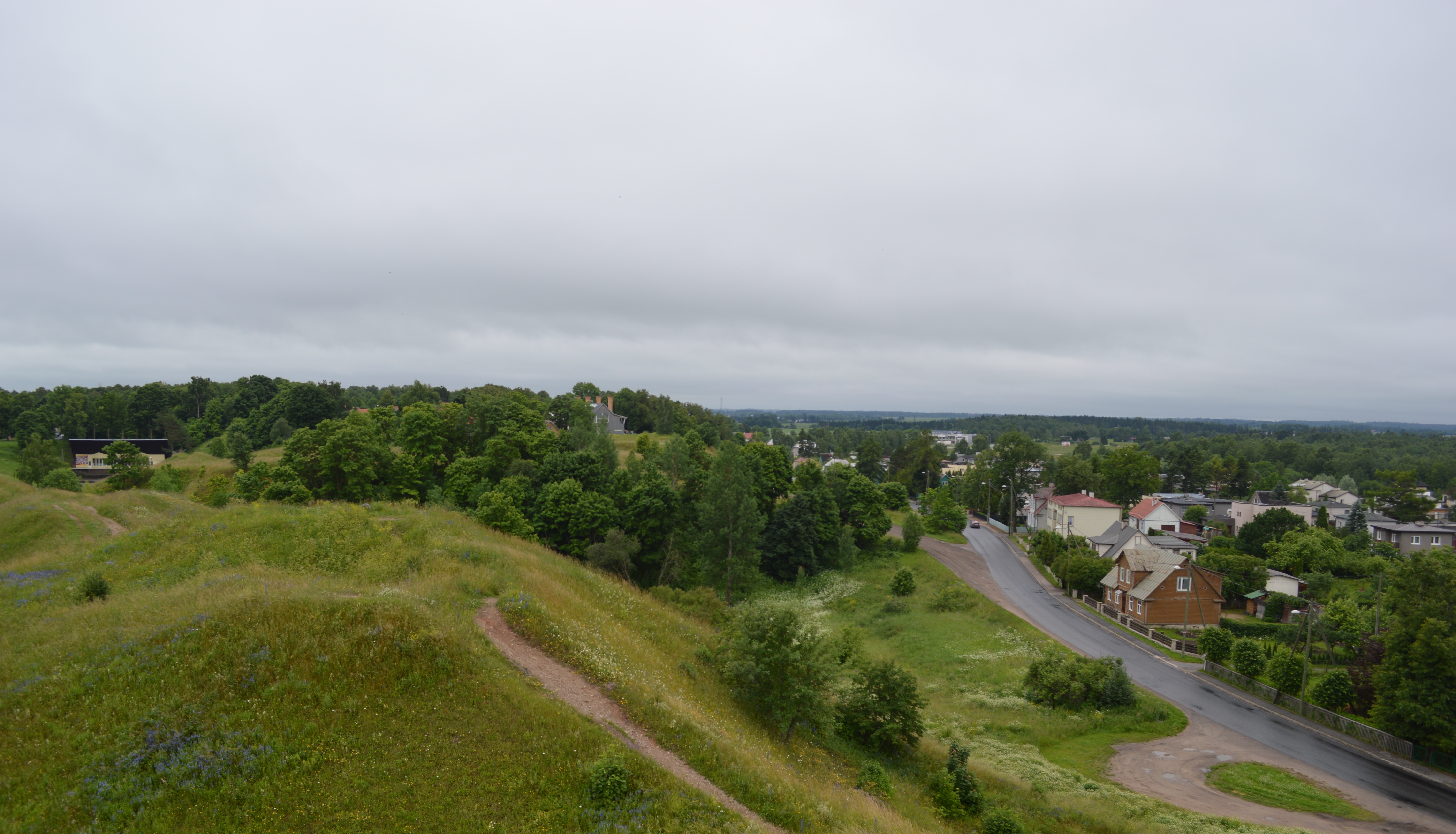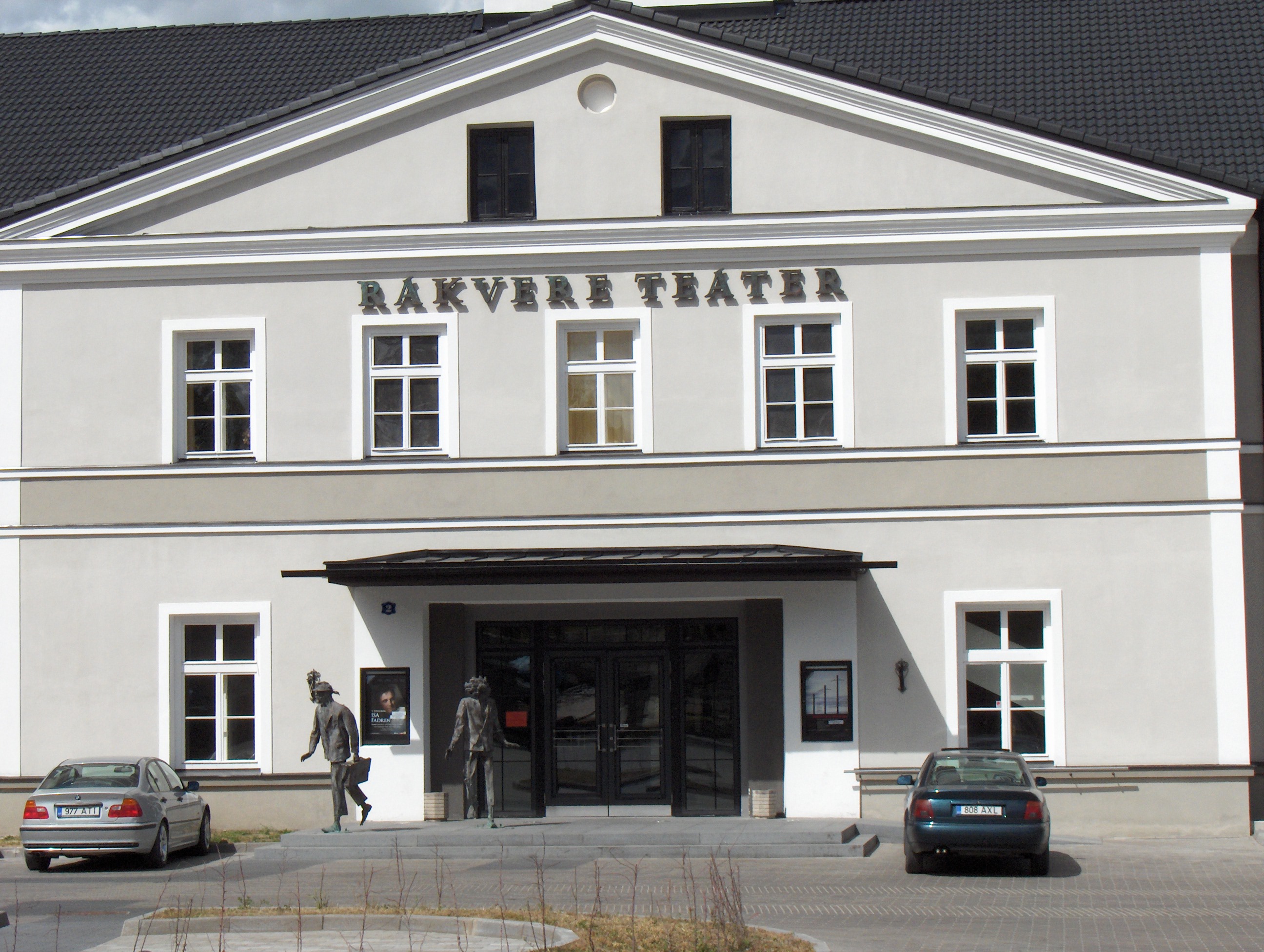|
Ines Aru
Ines Aru (born Ines Parker; 1 July 1939) is an Estonian stage, radio, voice, television, and film actress whose career began in the early 1960s. Early life and education Ines Aru was born Ines Parker in Tallinn to Martin Johannes Parker and Leena Parker (''née'' Laid). Both of her parents were communist activists who had been incarcerated by Estonian authorities in the 1920s for their political activity and released in 1938, the year prior to her birth. Following the German occupation of Estonia during World War II in July 1941, she was evacuated to Samara Oblast in the Ural Mountains of Russia with her mother and grandmother. Her father remained in Tallinn and planned to join them shortly thereafter. In August 1941, he boarded a ship at the Port of Tallinn that struck a mine and was killed. Her mother Leena died of tuberculosis while in Russia on 3 December 1942 at age forty when Ines was three years old. Afterward, she returned to Estonia with her grandmother who raised her in ... [...More Info...] [...Related Items...] OR: [Wikipedia] [Google] [Baidu] |
Tallinn
Tallinn () is the most populous and capital city of Estonia. Situated on a bay in north Estonia, on the shore of the Gulf of Finland of the Baltic Sea, Tallinn has a population of 437,811 (as of 2022) and administratively lies in the Harju '' maakond'' (county). Tallinn is the main financial, industrial, and cultural centre of Estonia. It is located northwest of the country's second largest city Tartu, however only south of Helsinki, Finland, also west of Saint Petersburg, Russia, north of Riga, Latvia, and east of Stockholm, Sweden. From the 13th century until the first half of the 20th century, Tallinn was known in most of the world by variants of its other historical name Reval. Tallinn received Lübeck city rights in 1248,, however the earliest evidence of human population in the area dates back nearly 5,000 years. The medieval indigenous population of what is now Tallinn and northern Estonia was one of the last " pagan" civilisations in Europe to adopt Christia ... [...More Info...] [...Related Items...] OR: [Wikipedia] [Google] [Baidu] |
Meeli Sööt
Meeli Sööt (13 September 1937 – 16 March 2024) was an Estonian stage, television, radio and film actress. Early life and education Meeli Sööt was born Meeli Alev in Tallinn to actor Voldemar Alev and Alvine Alev (''née'' Väravas). In 1956, she graduated from Tallinn 7th Secondary School (now, Tallinn English College). From 1956 until 1957, she studied at the Tallinn Pedagogical Institute (now, Tallinn University), and graduated in 1961 from the Tallinn State Conservatory, Performing Arts Department (now, the Estonian Academy of Music and Theatre) in TallinnSõnumileht. ''Tundetu näitleja poleks näitleja''. 22 September 1997 under the course supervision of theatre pedagogue Voldemar Panso. Among her classmates were noted future actors Tõnu Aav, Mikk Mikiver, Maila Rästas, Aarne Üksküla, Madis Ojamaa, Jaan Saul, Ines Aru, and Mati Klooren. Stage career Following graduation in 1961, she became engaged at the Estonian Drama Theatre in Tallinn. She would remain an actr ... [...More Info...] [...Related Items...] OR: [Wikipedia] [Google] [Baidu] |
Lilli Promet
Lilli Promet (16 February 1922 – 16 February 2007) was an Estonian author. Life Promet was born in Petseri to the Estonian painter, Aleksander Promet. After finishing Tallinn 18th Elementary School, she entered the State Industrial Art School in 1935, from which she graduated in Spring 1940. In Autumn she was asked to work at the newspaper '' Noorte Hääl''. After the outbreak of World War II, she and her family were forced to leave their home and evacuated to Tatarstan. In Summer 1943, Promet went to work at Estonian language radio in blocked Leningrad. 1944–1951 she worked as a journalist in Tallinn. Promet died on her 85th birthday in Tallinn. She is buried at the Metsakalmistu cemetery in Tallinn. She was married to writer Ralf Parve (1919–2011). Their son Ralf R. Parve Ralf R. Parve (6 May 1946 Tallinn – 6 February 2008) is an Estonian humorist, radio personality and politician. He was a member of VII Riigikogu, representing the Estonian Centre Party The ... [...More Info...] [...Related Items...] OR: [Wikipedia] [Google] [Baidu] |
Veljo Käsper
Veljo Käsper (13 May 1930 Tallinn – 16 March 1982 Tallinn) was an Estonian film director and scenarist. In 1964 he graduated from Gerasimov Institute of Cinematography. Since 1960 he worked at Tallinnfilm. Filmography * 1974 "Dangerous Games (1974 film), Dangerous Games" (feature film; director) * 1977 "A Time to Live and a Time to Love" (feature film; director) * 1979 "Strateegia ja reservid" (documental film; director and scenarist) * 1980 "Kutsumus" (documental film; director and scenarist) * 1981 "Pihlakaväravad" (feature film; director and scenarist) References {{DEFAULTSORT:Kasper, Vello 1930 births 1982 deaths Estonian film directors Estonian screenwriters People from Tallinn Burials at Rahumäe Cemetery 20th-century screenwriters ... [...More Info...] [...Related Items...] OR: [Wikipedia] [Google] [Baidu] |
Hans Leberecht
Hans Leberecht (1 December 1910 – 10 November 1960) was an Estonian writer. Many of his works mirrored socialist realism. His most important work was a story ''Valgus Koordis'' (1949). He was born in Saint Petersburg. His childhood years passed in the village of Koordi in Järva County. In 1944 he joined with Communist Party. After World War II, he lived in Tallinn Tallinn () is the most populous and capital city of Estonia. Situated on a bay in north Estonia, on the shore of the Gulf of Finland of the Baltic Sea, Tallinn has a population of 437,811 (as of 2022) and administratively lies in the Harju ' .... He was a special correspondent for the newspaper ''Sovetskaya Estoniya''. Works * story ''Valgus Koordis'' (1949) * novel ''Kaptenid'' (1956) * novel ''Sõdurid lähevad koju'' (1957) * novel ''Vassarite paleed'' (1960) References {{DEFAULTSORT:Leberecht, Hans 1910 births 1960 deaths 20th-century Estonian writers Writers from Saint Petersburg People from Sank ... [...More Info...] [...Related Items...] OR: [Wikipedia] [Google] [Baidu] |
Tallinnfilm
Tallinnfilm is the oldest surviving film studio in Estonia. It was founded as Estonian Culture Film in 1931, and was nationalized in 1940 after Estonia was forced into the Soviet Union. During the first year of Soviet Occupation (1940–1941) ''Eesti Kultuurfilm'' was taken over by the Communist Party and renamed ''Kinokroonika Eesti Stuudio'' (the Estonian Newsreel Studio). In 1942 during the German occupation the studio was renamed ''Kinokroonika Tallinna Stuudio'' (the Tallinn Newsreel Studio) and then renamed again as ''Tallinna Kinostuudio'' (the Tallinn Film Studio) in 1947 by the Soviets. The Tallinn Film Studio was renamed ''Kunstiliste ja Kroonikafilmide Tallinna Kinostuudio'' (Tallinn Feature and Newsreel Film Studio) in 1954 and in 1963 was renamed again Tallinnfilm. During the Soviet era, the studio was the only major movie production house in Estonia, responsible for almost all feature-length movies of the time. (Most of the rest were produced by Eesti Televisioon.) ... [...More Info...] [...Related Items...] OR: [Wikipedia] [Google] [Baidu] |
Herbert Rappaport
Herbert Rappaport (1908–1983), known in the Soviet Union as Gerbert Moritsevich Rappaport, was an Austrian-Soviet screenwriter and film director. Rappaport was born in 1908 in Vienna, Austria-Hungary, to Jewish parents from Lemberg (now Lviv, Ukraine). From 1927 to 1929 he studied law at University of Vienna. Rappaport worked as screenwriter, music editor, and assistant director in Austria, Germany, and the United States from 1928 onward. During the early 1930s he worked as an assistant to Georg Wilhelm Pabst. In 1936 he was officially invited to the Soviet Union to internationalize the Soviet Cinema which he accepted and spent the following 40 years working as a filmmaker there. Among Rappaport's best known films is an adaptation of Dmitri Shostakovich's ''Cheryomushki'' ("Cherry Town") (1963). In 2008 the first workshowas initiated outside Russia by the Austrian Filmmuseum and SYNEMA-Gesellschaft für Film und Medien, showing about half of his films. Filmography * '' ... [...More Info...] [...Related Items...] OR: [Wikipedia] [Google] [Baidu] |
Rakvere
Rakvere is a town in northern Estonia and the administrative centre of the Lääne-Viru '' maakond'' (county), 20 km south of the Gulf of Finland of the Baltic Sea. Rakvere is the 8th most populous urban area in Estonia. Rakvere has a total area of 10.75 square kilometres, and although about 15% of it is covered by forest, the city is still populated so densely as to make it the third most densely populated city in Estonia. From the 13th century until the early 20th century, Rakvere was more widely known by its historical German name, ''Wesenberg(h)''. History The earliest signs of human settlement dating back to the 3rd–5th centuries AD have been found on the present theatre hill. Probably to protect that settlement, a wooden stronghold was built on the present-day Vallimägi. Soon after the kingdom of Denmark had conquered northern Estonia, in 1220, the new rulers started to erect stone buildings. A settlement called ''Tarvanpea'' was first mentioned in the Chronicle ... [...More Info...] [...Related Items...] OR: [Wikipedia] [Google] [Baidu] |
Rakvere Theatre
Rakvere Theatre is a professional theatre in Rakvere, Estonia. History Rakvere Theatre was established in the fall of 1921, when ''Rakvere Näitlejate Ring'' was formed. The building of the Rakvere Theatre was opened with a public ceremony on 24 February 1940, the 22nd anniversary of independent Estonia, the following day the first ever play, August Kitzberg's ''"Tuulte pöörises"'' premiered. The theatre's artistic director An artistic director is the executive of an arts organization, particularly in a theatre or dance company, who handles the organization's artistic direction. They are generally a producer and director, but not in the sense of a mogul, since the ... is Üllar Saaremäe, and theatre manager is Joonas Tartu. Rakvere is believed to be the smallest town in Europe, which has its own professional theatre. As of 2019, the troupe consists of 21 actors, eleven men and ten women: Gallery File:Rakvere_teater.jpg, Theatre building from east File:HPIM2181_Rak ... [...More Info...] [...Related Items...] OR: [Wikipedia] [Google] [Baidu] |
Tartu
Tartu is the second largest city in Estonia after the Northern European country's political and financial capital, Tallinn. Tartu has a population of 91,407 (as of 2021). It is southeast of Tallinn and 245 kilometres (152 miles) northeast of Riga, Latvia. Tartu lies on the Emajõgi river, which connects the two largest lakes in Estonia, Lake Võrtsjärv and Lake Peipus. From the 13th century until the end of the 19th century, Tartu was known in most of the world by variants of its historical name Dorpat. Tartu, the largest urban centre of southern Estonia, is often considered the "intellectual capital city" of the country, especially as it is home to the nation's oldest and most renowned university, the University of Tartu (founded in 1632). Tartu also houses the Supreme Court of Estonia, the Ministry of Education and Research, the Estonian National Museum, and the oldest Estonian-language theatre, Vanemuine. It is also the birthplace of the Estonian Song Festiva ... [...More Info...] [...Related Items...] OR: [Wikipedia] [Google] [Baidu] |
Vanemuine
Vanemuine () is a theatre in Tartu, Estonia. It was the first Estonian language theatre. History ''1870–1906 The Beginning of the Beginning. Koidula’s Theatre, Wiera’s Theatre.'' On June 24, 1870 was the first day in Estonian theatre history by Lydia Koidula's play "Saaremaa onupoeg" (en: Cousin from Saaremaa) was performed.It was the first Estonian language play and it was performed at the Vanemuine Society house at Jaama Street in Tartu. Yet, some ten years before the birth of theatre, J. V. Jannsen – the future President of the Vanemuine Society, had quite a negative mentality about theatre, speaking in his newspaper and scolding one reader who had expressed a wish to read more about theatre from the newspaper: ''"Are you seriously demanding "Postimees" to bring messages from theatre play? Oh, dear, perhaps somebody is to come and ask him about science, in which pub the citizens spend their time each night, what their wives cooked for lunch and who the coachmen ... [...More Info...] [...Related Items...] OR: [Wikipedia] [Google] [Baidu] |
_Ines_Aru_ja_Salme_Reek.jpg)



